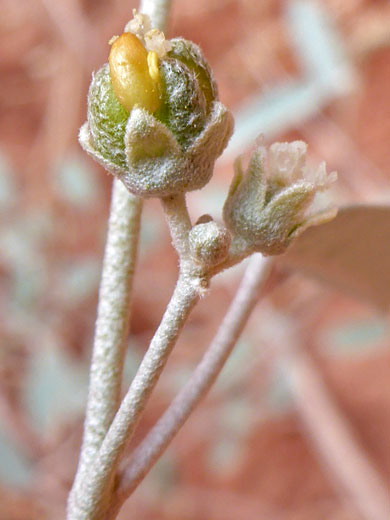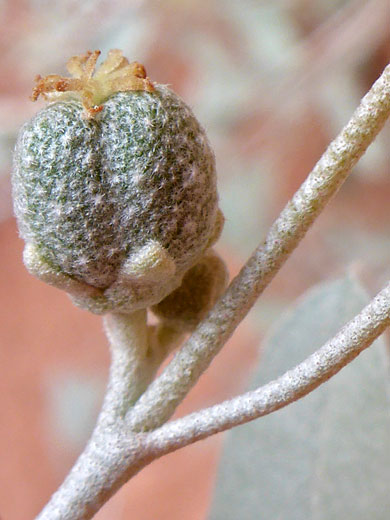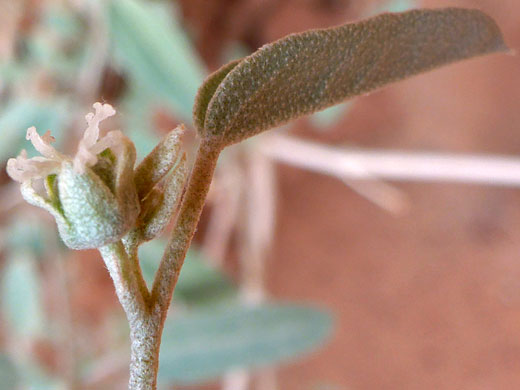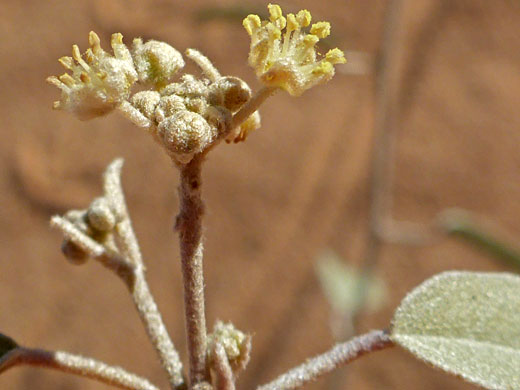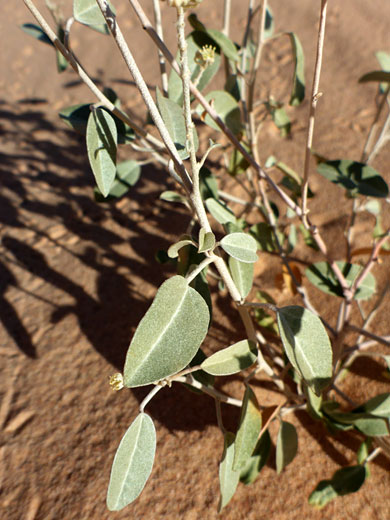Common name:
California croton
Family:
Scientific name:
Croton californicus
Main flower color:
Range:
South and central California, west Arizona, Mojave Desert regions of Nevada and Utah, and a few locations in south New Mexico
Height:
Up to 3 feet
Habitat:
Washes, dunes, sagebrush flats, sandy places; up to 3,000 feet
Leaves:
Gray-green, oblong to narrowly elliptic, up to 2 inches long and 0.8 inches wide. On stalks of around one inch. Stellate-hairy
Season:
February to October
Croton californicus is a dioecious species; plants produce either staminate or pistillate flowers. The former have between ten and 15 stamens, with whitish filaments and yellow anthers, while the latter contain a three-pronged ovary, each chamber topped by a four-lobed style. Both types of flower have five equal-sized sepals (larger for pistillate specimens), but no petals. Sepals, stems and leaves are covered by scale-like, star-shaped hairs.
The inflorescence is an open, leafy cluster, of between three and eight flowers (staminate) or one to six (pistillate). Leaves are light green below, darker above, with blades that are more than twice as long as wide.
The inflorescence is an open, leafy cluster, of between three and eight flowers (staminate) or one to six (pistillate). Leaves are light green below, darker above, with blades that are more than twice as long as wide.
All Contents © Copyright The American Southwest | Comments and Questions | Contribute | Site Map




